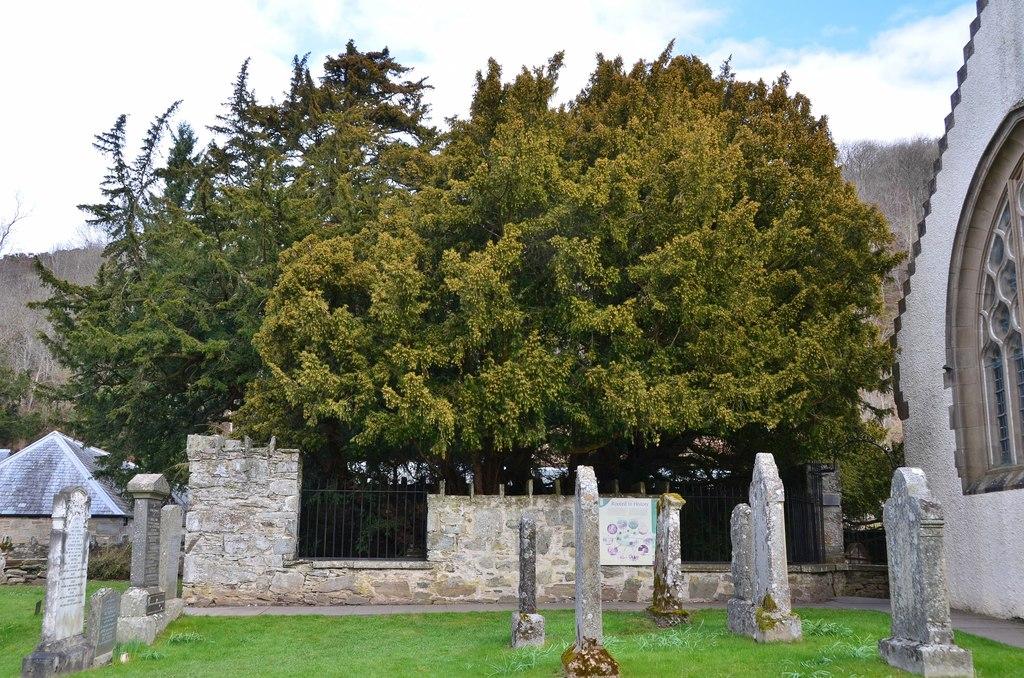St Fillan
Killin, Central
St Fillan is an excellent example of a tin tabernacle.

Standing on an ancient Christian site, the current church was built in 1900-02 to designs blending Scottish vernacular with the newly fashionable Arts and Crafts style.
Fortingall, Tayside
The belfry of the old 18th century church is in an enclosure in the churchyard.
The Fortingall Yew, close by the church, is believed to be about 5000 years old. Revd Duncan Macara, minister for 50 years in the 18th century, is buried beneath the tree. In his time, Fortingall parish included Rannoch as well as Glenlyon, and was one of the largest parishes in Scotland.
An ancient stone font is outside the church, together with interesting cross marked slabs, while inside are fragments of fine Pictish crosses. Recent archaeology has revealed that the Celtic monastery was surrounded by a vallum with a ditch almost 2 metres deep and a correspondingly high embankment. Nearby remains from the neolithic and bronze ages confirm that the dale of Fortingall has always had spiritual significance.
On the inside of the church, the walls are sandstone, with oak panelling. The roof is of hand worked oak timbers in an open barrel vault.
The pews and other furnishings are also of oak, as is the chancel screen, which was designed by Sir Robert Lorimer along with stone tablets of the Lord’s Prayer and Ten Commandments.
Killin, Central
St Fillan is an excellent example of a tin tabernacle.
Pitlochry, Tayside
The Church was built in 1857 as the town of Pitlochry grew.
Dunkeld, Tayside
The history of Dunkeld can be traced to the 9th century but no building of this period survives: the present Cathedral dates from 1318.